Not long after returning from Poland, I watched the new season of Emily in Paris. Imagine my delight when she pretended Kraków, not Rome, was her travel destination even if it would have been difficult for the producers to glamorize. Wawel Castle, for example, is best glimpsed in pieces. Here's the chapel, seen from the royal apartments.
Built to house Casimir III the Great in the 14th century, it sits atop a hill in the old city, or Stare Miasto. We met the king the day before in the salt mine.
Here's Christine at the entrance, before we faced a bewildering menu of ticket options.
But once we climbed to the top we could see why. The place was huge, with many hodgepodge additions over the centuries.
Hans Frank, the Nazi governor general of Poland, lived here while he crowded Jews into ghettos prior to their extermination. He was tried for war crimes at Nuremberg and hanged there in October 1946.
Our tickets included admission to an exhibit of Biblical sculptures, carved from wood, by Johann Georg Pinsel in the 18th century
. . . as well as Turkish tents from the Ottoman Empire which actively traded with Poland in the Middle Ages.
Italian Renaissance art hung in the part of the royal apartments we visited. In college I had a friend whose parents decorated their Westchester foyer with the same flocked wallpaper and a carved wooden sculpture on the bannister that looked as if it been stolen from the bow of a ship.
Much of the castle's art and furnishings were stored in Canada during World War II and eventually returned to the Poles.
Intricately patterned, tiled stoves from Moscow kept the rooms warm.
Apparently, you can cover your walls with leather, too.
There's a small, naturally lit study named for King Sigismund III Vasa, who brought Catholicism to his empire after uniting Poland, Lithuania, Sweden and Finland in the 16th century. He also moved the capital from Kraków to Warsaw during a period of relative prosperity and peace.
This may be him.
 |
| "Christ Blessing the Children" by Lucas Cranach the Elder (16th century) |
Wawel Castle also has a huge collection of Meissen porcelain which I only began to appreciate after a visit with Florian to the town where it still is made. When the factory opened in 1710 by decree of King Augustus II the Strong, Meissen was in Polish territory.
"Crucifixion," from 1744, is the most impressive of more than 400 early pieces on display.
One of the Polish royals had a thing for pugs, not my favorite breed.
They were everywhere.
I didn't realize it at the time, but the Vistula River, Poland's longest, runs behind one of the royal gardens.
Contemporary sculptures looked right at home.
 |
| "Bot" |
 |
| "Veni, Vidi, Vici" |
 |
| "Releve" |
Casimir III also built Jagiellonian University, which has been in continuous operation ever since. We strolled through the nearby Garden of Professors after visiting the castle.
The Poles are not shy about reminding you of their terrible history. After invading Poland, the Nazis conducted academic purges almost as soon as they destroyed cultural relics. Can an institution of higher learning really be considered "in operation" under these circumstances?
The lovely courtyard of the university's oldest building, the Collegium Maius, is next door to the garden and very close to Kraków's main square, known as Rynek Główny.
It was one of the few places I could picture Emily.
Carriage horse rides do not seem to be controversial in Kraków.
Cloth Hall dominates Rynek Główny, the place where Poles gathered after the failed attempt to assassinate Pope John Paul II. The Basilica of St. Mary's looms behind it.
Built during the Renaissance, when Kraków was an international trading hub, it's now lined with vendors selling a variety of goods. I bought a Christmas ornament from a Polish rose.
I assumed this sculpture near the Town Hall Tower referenced the destruction of statues during the Nazi occupation. Wrong! Igor Mitoraj, the sculptor, calls it "Eros Bound."
St. Florian's Gate wasn't far from our VRBO.
Looks like Mercury knows how to play a Pan flute, too.
There are no shortage of places to dine around Rynek Główny.
Or gift shops.
Kraków looked a lot prettier late in the day, when the sun broke through the clouds.
More Poland
Gdansk:
Kraków:








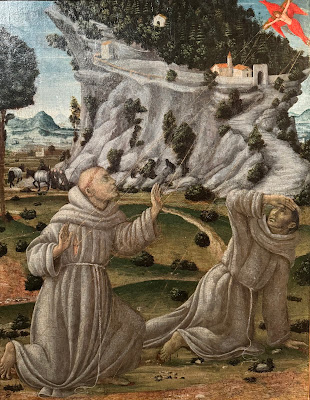



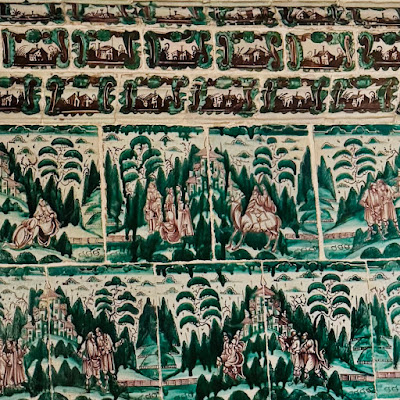

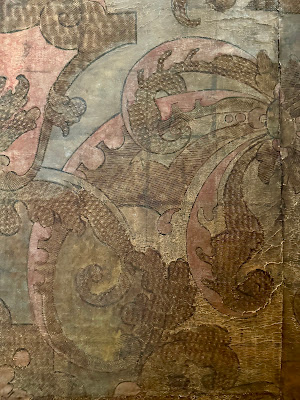
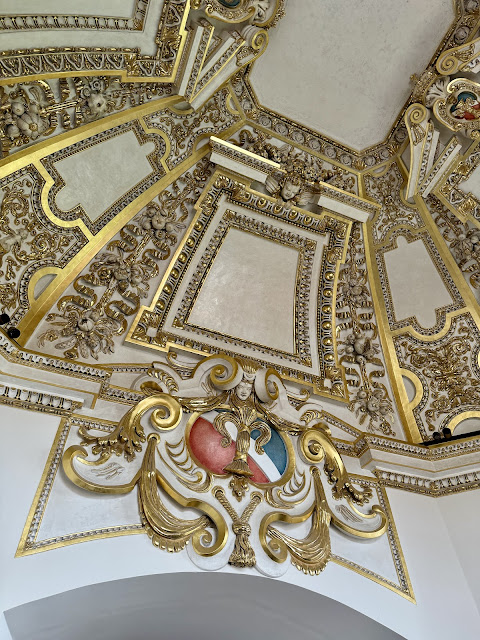











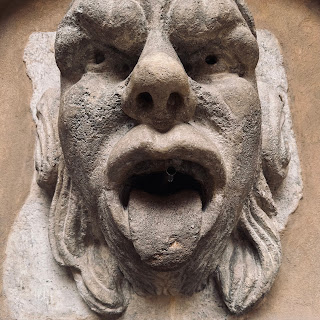











No comments:
Post a Comment